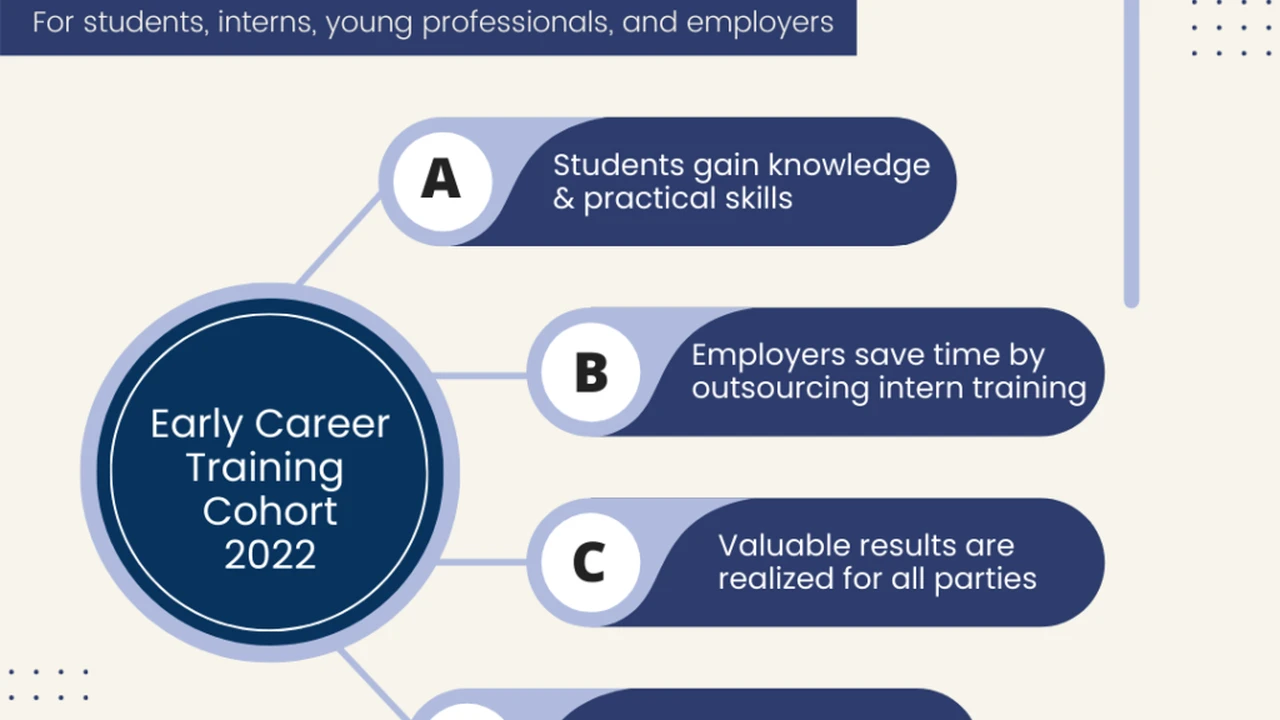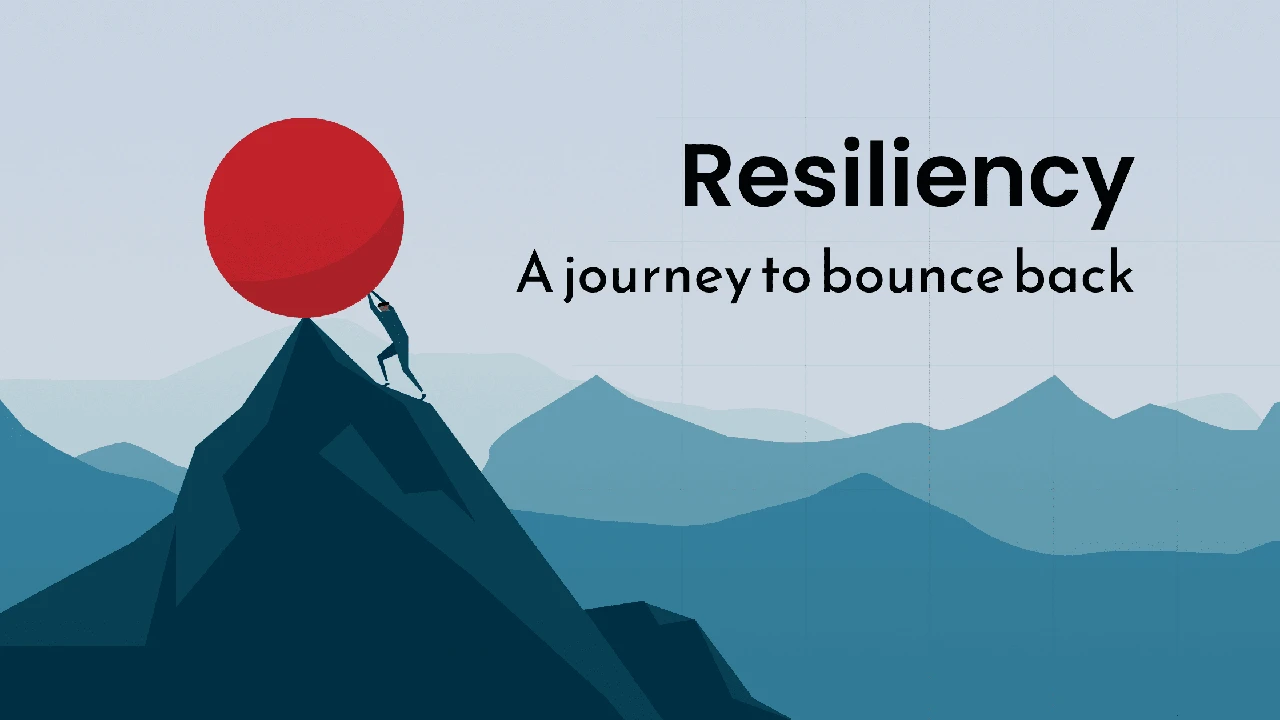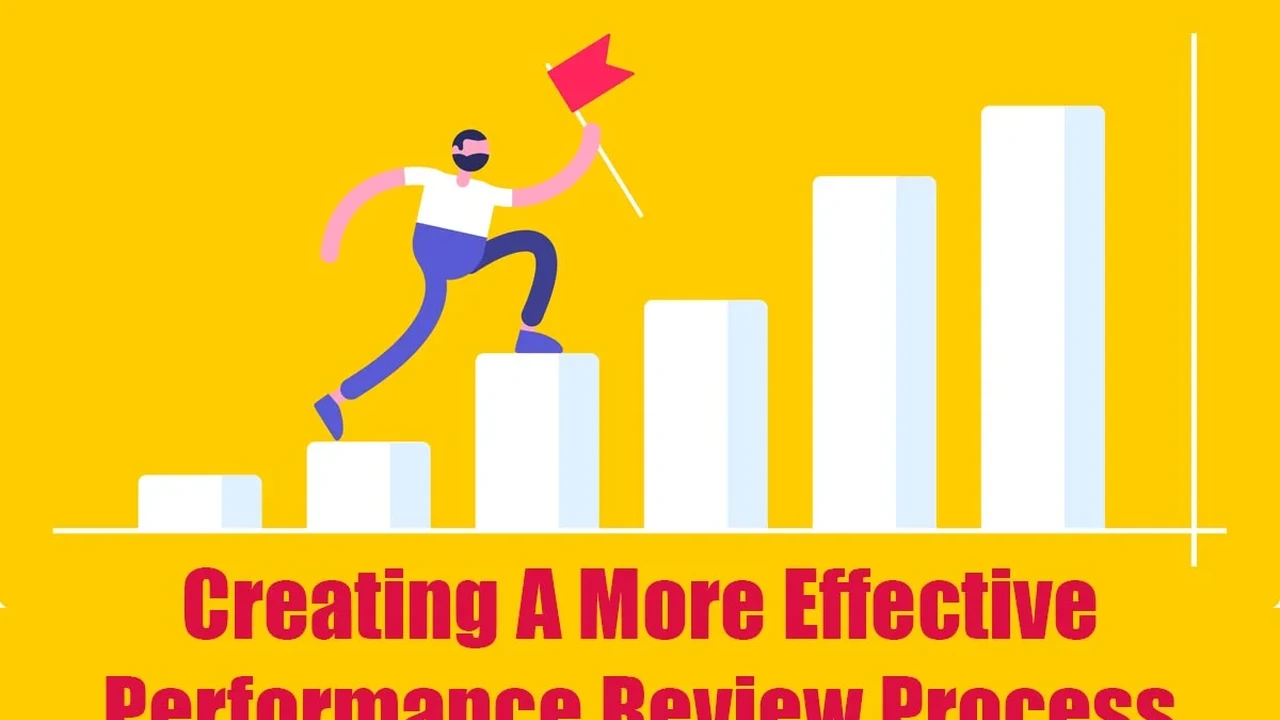3 Essential Skills for Q4 Career Success
Learn about the three crucial skills that will boost your performance and career prospects in the final quarter.

3 Essential Skills for Q4 Career Success
Hey there, career accelerator! As we dive deep into Q4, it's not just about wrapping up projects; it's about setting yourself up for a massive leap forward. This final quarter is a golden opportunity to showcase your capabilities, solidify your position, and even eye that promotion or new role. But how do you really make an impact when everyone else is feeling the year-end crunch? It boils down to mastering a few crucial skills. We're not talking about obscure technical jargon here, but rather foundational abilities that will make you indispensable. Let's break down the three essential skills that will not only boost your performance but also significantly enhance your career prospects in Q4 and beyond.
Mastering Time Management and Prioritization for Q4 Productivity
Alright, let's be real. Q4 often feels like a sprint to the finish line. Deadlines are looming, holiday plans are distracting, and suddenly, your to-do list looks like a novel. This is where top-notch time management and prioritization skills become your superpower. It's not just about getting things done; it's about getting the right things done, efficiently and effectively. Think about it: when you can clearly identify what truly matters and allocate your time accordingly, you're not just busy, you're productive. This skill is a game-changer for anyone looking to accelerate their career, as it directly impacts your output, reliability, and overall contribution to your team and company.
Why Time Management is Your Q4 Secret Weapon
In Q4, projects often accelerate, and new initiatives might pop up unexpectedly. Without a solid grasp of time management, you risk feeling overwhelmed, missing deadlines, and ultimately, underperforming. Effective time management allows you to:
- Reduce Stress: Knowing what you need to do and when helps alleviate anxiety.
- Increase Productivity: You focus on high-impact tasks, leading to better results.
- Improve Work-Life Balance: By being efficient, you create more personal time.
- Enhance Reputation: You become known as someone reliable and capable.
Practical Strategies for Prioritization and Time Management
So, how do you actually do it? Here are some tried-and-true strategies:
The Eisenhower Matrix for Urgent Important Tasks
This classic method helps you categorize tasks based on their urgency and importance. It's super simple but incredibly effective. You divide your tasks into four quadrants:
- Do First (Urgent and Important): These are your top priorities. Think critical deadlines, crisis management.
- Schedule (Important but Not Urgent): These are crucial for long-term goals but don't need immediate action. Think planning, skill development.
- Delegate (Urgent but Not Important): Tasks that need to be done quickly but don't require your specific skills.
- Eliminate (Not Urgent and Not Important): These are time-wasters. Just get rid of them!
By using this, you ensure you're always working on what truly moves the needle for your career and your company.
The Pomodoro Technique for Focused Work Sprints
Feeling easily distracted? The Pomodoro Technique is your friend. It involves breaking down your work into 25-minute intervals, separated by short breaks. After four 'Pomodoros,' you take a longer break. This method helps maintain focus, prevents burnout, and makes large tasks feel more manageable. It's fantastic for deep work sessions, especially when you have a lot on your plate in Q4.
Time Blocking for Structured Schedules
This is where you literally block out specific times in your calendar for specific tasks. Treat these blocks like non-negotiable appointments. For example, 9 AM to 11 AM is for 'Project X Deep Work,' 1 PM to 2 PM is for 'Email and Communications.' This creates a structured day, reduces decision fatigue, and ensures important tasks get dedicated attention.
Recommended Tools for Time Management and Productivity
Now, let's talk about some cool tools that can help you implement these strategies. There are tons out there, but here are a few popular ones that offer different features and price points:
Todoist for Task Management and Prioritization
What it is: Todoist is a super intuitive and powerful task manager. It's great for creating to-do lists, setting deadlines, and prioritizing tasks. You can use it for personal tasks, work projects, and even collaborate with teams. It supports the Eisenhower Matrix concept by allowing you to set priority levels for each task.
Key Features: Natural language input (e.g., 'buy groceries every Friday'), recurring tasks, sub-tasks, projects, labels, filters, integrations with other apps (like Google Calendar, Slack). It has a 'Karma' system that gamifies productivity, which can be a fun motivator.
Use Cases: Perfect for managing daily tasks, tracking project progress, setting reminders for important Q4 deadlines, and collaborating on shared to-do lists with colleagues.
Pricing: Free version available with basic features. Pro plan is around $4/month (billed annually) for advanced features like reminders, filters, and more projects. Business plan is around $6/user/month (billed annually) for team collaboration features.
Comparison: Simpler and more focused on task management than a full project management suite. Its strength lies in its ease of use and quick task entry.
Trello for Visual Project Management and Collaboration
What it is: Trello uses a Kanban-style board system, which is incredibly visual. You create boards for projects, lists for stages (e.g., 'To Do,' 'Doing,' 'Done'), and cards for individual tasks. It's fantastic for seeing the big picture and tracking progress at a glance.
Key Features: Drag-and-drop interface, checklists, due dates, attachments, labels, power-ups (integrations with other apps like Slack, Google Drive), team collaboration features. It's very flexible and can be adapted to many workflows.
Use Cases: Ideal for managing team projects, tracking content creation, planning events, or even organizing your personal Q4 goals. The visual nature makes it easy to see what's urgent and important.
Pricing: Free version available with unlimited cards and up to 10 boards. Standard plan is around $5/user/month (billed annually) for unlimited boards and advanced features. Premium and Enterprise plans offer more robust features for larger teams.
Comparison: More visual and collaborative than Todoist, making it better for team-based projects where you need to see task flow. Less focused on individual task prioritization like Todoist.
Clockify for Time Tracking and Analysis
What it is: Clockify is a free time tracker and timesheet app. It allows you to track the time you spend on different tasks and projects. This is invaluable for understanding where your time actually goes, identifying time sinks, and improving your estimates for future tasks.
Key Features: Manual and automatic time tracking, project and task categorization, reporting, team tracking, integrations with popular project management tools. It's very straightforward to use.
Use Cases: Perfect for freelancers billing clients, but also incredibly useful for anyone wanting to analyze their own productivity. You can see exactly how much time you're spending on emails vs. deep work, helping you adjust your time blocking strategies for Q4.
Pricing: Completely free for basic time tracking. Paid plans (starting around $3.99/user/month billed annually) offer advanced features like invoicing, budgeting, and more detailed reporting.
Comparison: Unlike Todoist or Trello, Clockify's primary function is time tracking, not task management. It complements other tools by providing data on your actual time usage.
By combining these strategies and tools, you'll be a Q4 productivity powerhouse, leaving your colleagues wondering how you get so much done!
Sharpening Communication and Collaboration Skills for Team Success
Okay, so you're a time management guru. Awesome! But in today's interconnected workplace, especially with hybrid and remote models becoming the norm, getting things done isn't just about your individual output. It's about how effectively you communicate and collaborate with others. Q4 often involves intense team efforts to hit year-end targets, and if your communication is fuzzy or your collaboration skills are lacking, even the best individual work can fall flat. This skill set is absolutely critical for career acceleration because it directly impacts team efficiency, project success, and your ability to influence and lead.
The Impact of Effective Communication and Collaboration in Q4
Think about it: miscommunications lead to wasted time, duplicated efforts, and frustration. Poor collaboration can derail entire projects. On the flip side, strong communication and collaboration lead to:
- Clearer Expectations: Everyone knows what's expected of them.
- Faster Problem Solving: Issues are identified and resolved quickly.
- Increased Innovation: Diverse ideas are shared and built upon.
- Stronger Relationships: You build trust and rapport with colleagues.
- Enhanced Leadership Potential: Leaders are excellent communicators and collaborators.
Key Aspects of Communication and Collaboration
It's not just about talking; it's about effective talking and listening. Here's what to focus on:
Active Listening for Better Understanding
This is probably the most underrated communication skill. Active listening means fully concentrating on what is being said, rather than just passively hearing the message. It involves:
- Paying Attention: Put away distractions, make eye contact (if in person/video).
- Showing You're Listening: Nod, use verbal affirmations ('I see,' 'uh-huh').
- Providing Feedback: Paraphrase what you heard to confirm understanding ('So, if I understand correctly, you're saying...').
- Deferring Judgment: Don't interrupt or formulate your response while the other person is speaking.
When you actively listen, you not only understand better but also make the other person feel valued, which builds trust and strengthens relationships.
Clear and Concise Written Communication
In a world dominated by emails, Slack messages, and project management comments, clear written communication is paramount. Avoid jargon where possible, get straight to the point, and structure your messages logically. Use bullet points for readability. Before hitting send, ask yourself: Is this message easy to understand? Does it convey exactly what I intend? Is there any ambiguity?
Constructive Feedback and Conflict Resolution
Q4 can be high-pressure, and conflicts might arise. Knowing how to give and receive constructive feedback, and how to navigate disagreements respectfully, is a huge asset. Focus on the behavior, not the person. Use 'I' statements ('I noticed X, and it had Y impact') rather than 'You' statements ('You always do Z'). Approach conflicts with a problem-solving mindset, aiming for a win-win solution.
Recommended Tools for Communication and Collaboration
These tools are essential for keeping teams connected and projects moving, especially in Q4 when everyone is busy.
Slack for Real-time Team Communication
What it is: Slack is a channel-based messaging platform. It allows teams to communicate in real-time, share files, and integrate with other apps. It's designed to reduce email clutter and foster quick, informal communication.
Key Features: Channels for different topics/projects, direct messaging, voice and video calls, file sharing, search functionality, extensive app integrations (Google Drive, Zoom, Asana, etc.). You can create private channels for sensitive discussions or public channels for broader team updates.
Use Cases: Daily team stand-ups, quick questions and answers, sharing updates on Q4 project progress, informal team building, and reducing the need for internal emails. It's great for fostering a sense of community within a team.
Pricing: Free version available with limited message history and integrations. Pro plan is around $7.25/user/month (billed annually) for unlimited message history, more integrations, and group calls. Business+ and Enterprise Grid plans offer more advanced features for larger organizations.
Comparison: More dynamic and real-time than email, and more structured than simple chat apps. It's a central hub for team communication.
Zoom for Video Conferencing and Virtual Meetings
What it is: Zoom is a leading video conferencing platform that enables virtual meetings, webinars, and online events. It's become indispensable for remote and hybrid teams to connect face-to-face.
Key Features: High-quality video and audio, screen sharing, virtual backgrounds, recording capabilities, breakout rooms for smaller group discussions, chat functionality, polling. It's generally very reliable and easy to use.
Use Cases: Team meetings, client presentations, one-on-one check-ins, virtual training sessions, and even informal coffee breaks. Essential for maintaining personal connection and clarity in Q4 when in-person meetings might be limited.
Pricing: Free version allows up to 100 participants for 40-minute meetings. Pro plan is around $149.90/year/license for longer meetings and more features. Business and Enterprise plans offer additional functionalities for larger organizations.
Comparison: While other platforms like Google Meet or Microsoft Teams offer similar features, Zoom is often praised for its user-friendliness and stability, especially for larger calls.
Google Workspace (Docs, Sheets, Slides) for Collaborative Document Creation
What it is: Google Workspace (formerly G Suite) is a suite of cloud-based productivity and collaboration tools, including Google Docs (word processing), Sheets (spreadsheets), and Slides (presentations). Its core strength is real-time collaboration.
Key Features: Real-time co-editing, version history, commenting, sharing permissions, cloud storage (Google Drive), integration with Gmail and Calendar. Multiple people can work on the same document simultaneously, seeing each other's changes live.
Use Cases: Collaborating on Q4 reports, drafting proposals, creating shared project plans, brainstorming documents, and preparing presentations. It eliminates the need for sending multiple versions of files back and forth via email.
Pricing: Free for personal use with a Google account. Business Starter plan is around $6/user/month for custom email, 30 GB cloud storage, and enhanced security. Business Standard and Plus plans offer more storage and advanced features.
Comparison: While Microsoft 365 offers similar desktop applications, Google Workspace excels in its native cloud-based, real-time collaboration features, making it ideal for dynamic team work.
By actively working on your communication and collaboration skills, and leveraging these tools, you'll not only contribute more effectively to your team's Q4 success but also position yourself as a valuable, indispensable team player.
Developing Adaptability and Resilience for Navigating Q4 Challenges
Alright, we've talked about getting things done and working well with others. But here's the kicker: Q4, like any other quarter, is rarely a smooth ride. Unexpected challenges pop up, priorities shift, and sometimes, things just don't go as planned. This is where adaptability and resilience come into play. These aren't just buzzwords; they are critical survival skills in a fast-paced professional environment. Being adaptable means you can pivot quickly when circumstances change, and being resilient means you can bounce back from setbacks stronger than before. For career acceleration, these skills are paramount because they demonstrate your ability to thrive in uncertainty, learn from failures, and maintain a positive outlook, all of which are highly valued by employers.
Why Adaptability and Resilience Matter in Q4
Q4 can bring its own unique set of pressures: year-end targets, budget constraints, last-minute client demands, or even unexpected team changes. Without adaptability and resilience, these challenges can lead to burnout, frustration, and missed opportunities. With them, you can:
- Embrace Change: See new challenges as opportunities, not obstacles.
- Overcome Setbacks: Learn from mistakes and keep moving forward.
- Maintain Well-being: Manage stress and prevent burnout.
- Innovate and Grow: Find new solutions and develop new skills.
- Lead Through Uncertainty: Inspire confidence in others during turbulent times.
Cultivating Adaptability and Resilience
These aren't traits you're born with; they're muscles you can strengthen. Here's how:
Embracing a Growth Mindset for Continuous Learning
This concept, popularized by Carol Dweck, is about believing that your abilities and intelligence can be developed through dedication and hard work. Instead of seeing challenges as proof of your limitations, you see them as opportunities to learn and grow. When a Q4 project hits a snag, a growth mindset helps you ask, 'What can I learn from this?' instead of 'Why is this happening to me?' This fuels your adaptability because you're always open to new strategies and solutions.
Practicing Mindfulness and Stress Management
Resilience isn't just about bouncing back; it's about managing the stress that comes with challenges. Mindfulness, which is the practice of being present and aware of your thoughts and feelings without judgment, can significantly reduce stress. Simple practices like deep breathing exercises, short meditation breaks, or even just taking a few minutes to focus on your senses can help you stay calm and clear-headed when things get hectic in Q4. Remember, a calm mind is a resilient mind.
Seeking and Learning from Feedback
Feedback, especially constructive criticism, can be tough to hear. But it's a goldmine for growth and adaptability. Instead of getting defensive, view feedback as valuable data. Ask clarifying questions, reflect on what was said, and identify actionable steps for improvement. This shows you're open to change and committed to continuous improvement, which are hallmarks of adaptable professionals.
Recommended Tools for Well-being and Personal Growth
While adaptability and resilience are internal skills, certain tools can support your journey by helping you manage stress, learn new things, and stay focused.
Calm for Mindfulness and Meditation
What it is: Calm is a popular app for meditation, sleep, and relaxation. It offers guided meditations, sleep stories, breathing programs, and masterclasses on various topics like stress, anxiety, and focus. It's designed to help you cultivate mindfulness and reduce stress.
Key Features: Daily meditations, sleep stories narrated by celebrities, breathing exercises, calming music, masterclasses on mental fitness. It has a user-friendly interface and beautiful visuals.
Use Cases: Taking short meditation breaks during a busy Q4 workday, improving sleep quality to ensure you're well-rested, learning stress management techniques, and developing a more mindful approach to work and life.
Pricing: Free basic content available. Premium subscription (Calm Premium) is around $69.99/year or a one-time payment of $399.99 for lifetime access, unlocking all content.
Comparison: Similar to Headspace, but often praised for its soothing aesthetics and a wider variety of sleep content. Both are excellent for building mindfulness habits.
Coursera for Skill Development and Growth Mindset
What it is: Coursera is an online learning platform offering courses, specializations, and degrees from top universities and companies worldwide. It's a fantastic resource for continuous learning and developing new skills, which directly feeds into adaptability.
Key Features: Thousands of courses in various subjects, peer-graded assignments, quizzes, discussion forums, certificates upon completion. Many courses are taught by university professors and industry experts.
Use Cases: Learning a new technical skill relevant to your Q4 projects, taking a course on leadership or emotional intelligence, exploring new industries, or simply expanding your general knowledge to foster a growth mindset. You can audit many courses for free.
Pricing: Many courses can be audited for free. Paid courses and specializations vary in price, typically ranging from $39 to $79 per month for a subscription, or one-time payments for specific courses. Degrees are significantly more expensive.
Comparison: Broader and more academically focused than platforms like Udemy or Skillshare, offering more structured learning paths and university-level content. Great for deep dives into new subjects.
Headspace for Guided Meditation and Stress Reduction
What it is: Headspace is another leading meditation and mindfulness app. It focuses on making meditation accessible and understandable, with a friendly, animated interface and clear, guided sessions.
Key Features: Guided meditations for various situations (stress, focus, sleep, anxiety), 'SOS' meditations for immediate relief, sleepcasts, mindful movement exercises, and short 'mini-meditations' for quick breaks. It has a very approachable style.
Use Cases: Incorporating short meditation breaks into your Q4 workday to manage stress, improving focus before important meetings, learning to be more present, and developing a consistent meditation practice to build resilience.
Pricing: Free basic content available. Premium subscription (Headspace Plus) is around $69.99/year or $12.99/month, unlocking all content.
Comparison: Very similar to Calm, but often preferred by beginners due to its simpler, more structured approach to teaching meditation. Both are excellent choices for mental well-being.
By actively nurturing your adaptability and resilience, and using these tools to support your mental well-being and continuous learning, you'll not only navigate Q4's inevitable challenges with grace but also emerge stronger and more capable for whatever comes next in your career journey.
Bringing It All Together for Your Q4 Career Acceleration
So, there you have it: three essential skills that can truly supercharge your career in Q4 and beyond. We've talked about mastering time management and prioritization to boost your productivity, sharpening your communication and collaboration skills for seamless teamwork, and developing adaptability and resilience to navigate any curveballs that come your way. These aren't isolated abilities; they're interconnected. When you manage your time well, you have more capacity to communicate clearly. When you're adaptable, you can better collaborate on new solutions. And when you communicate effectively, you build the resilience of your team.
The beauty of these skills is that they're not just for Q4; they're lifelong assets. By focusing on them now, you're not just aiming for a strong year-end finish; you're investing in your long-term professional growth. So, pick one skill to really focus on this week. Maybe it's trying out the Pomodoro Technique, or actively listening in your next team meeting, or even just taking five minutes to breathe when you feel overwhelmed. Small steps lead to big changes. Go out there and make Q4 your most impactful quarter yet!
:max_bytes(150000):strip_icc()/277019-baked-pork-chops-with-cream-of-mushroom-soup-DDMFS-beauty-4x3-BG-7505-5762b731cf30447d9cbbbbbf387beafa.jpg)






